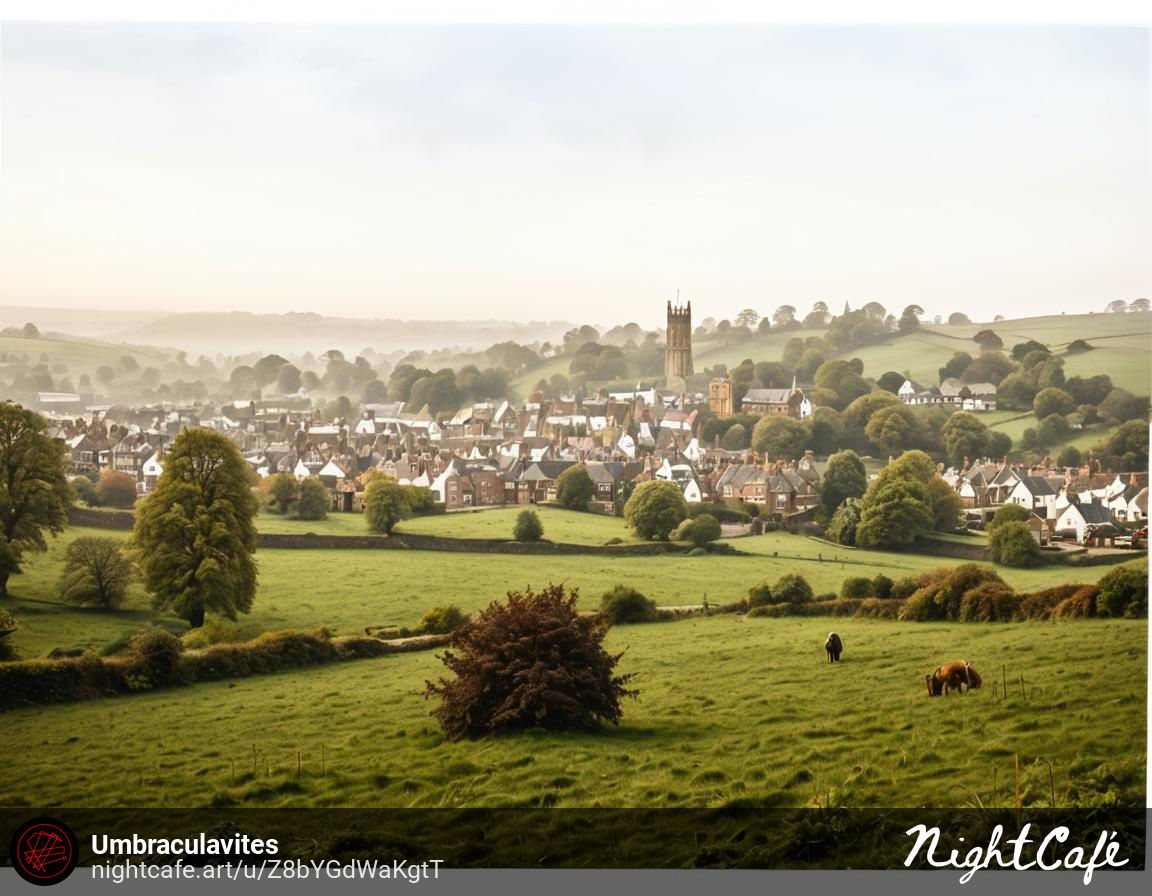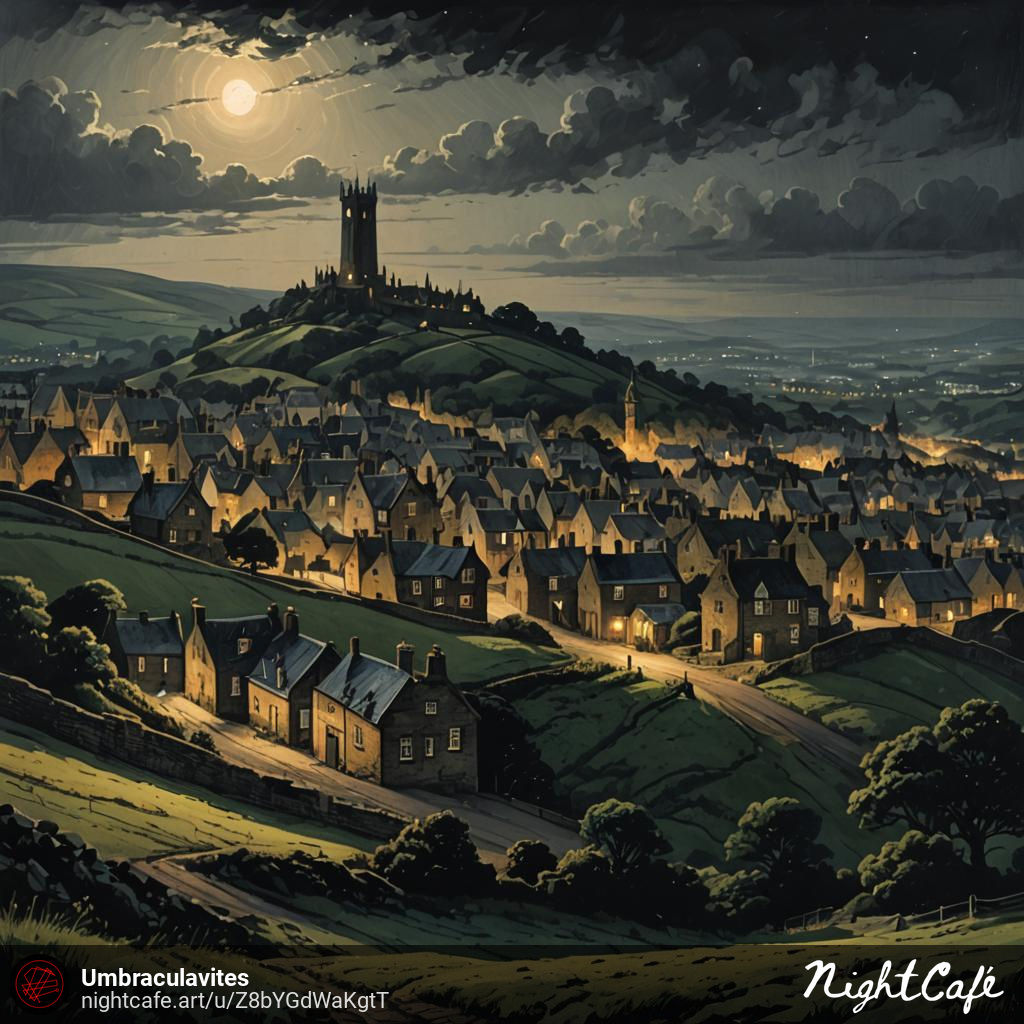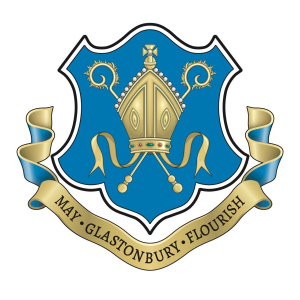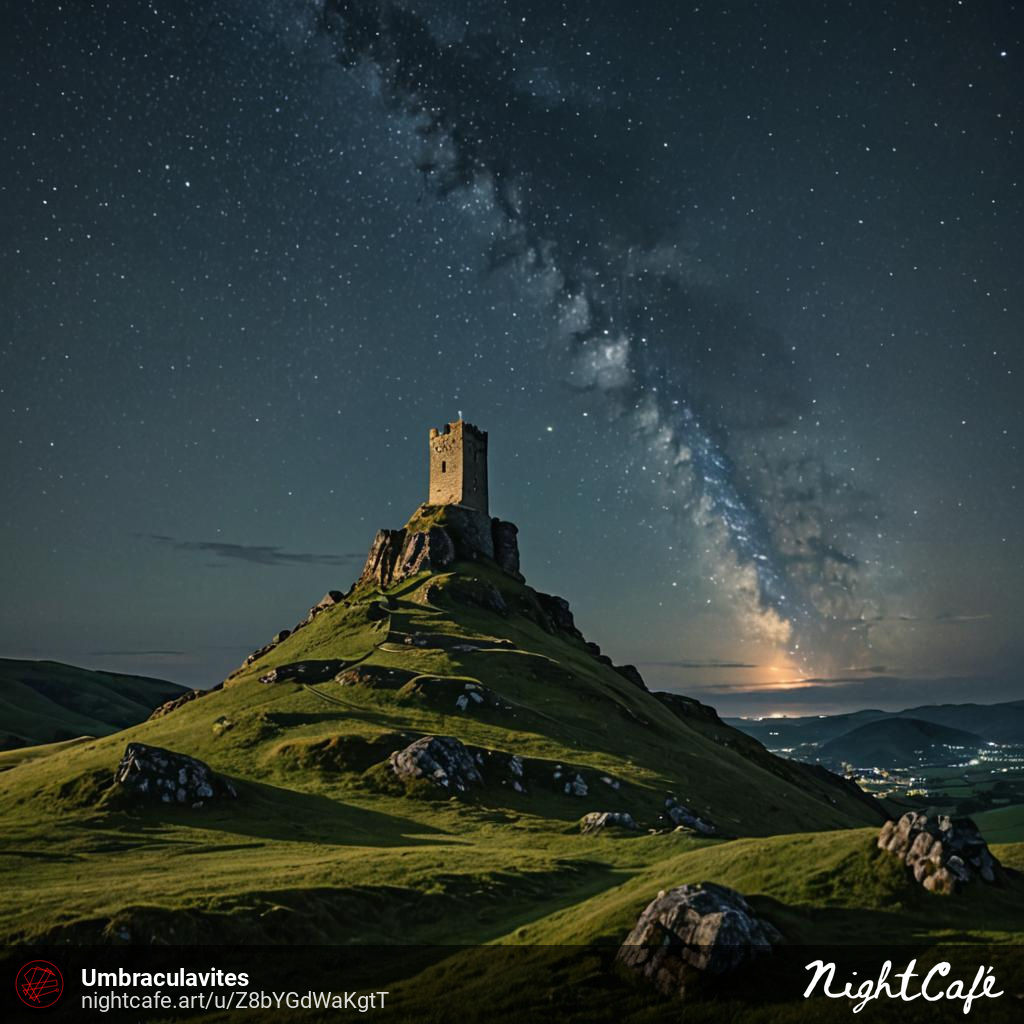Difference between revisions of "Glastonbury"
(→Introduction) |
(→Myth & Legend) |
||
| (6 intermediate revisions by the same user not shown) | |||
| Line 66: | Line 66: | ||
---- | ---- | ||
== '''History''' == | == '''History''' == | ||
| + | === Myth & Legend === | ||
| + | Glastonbury is notable for myths and legends concerning '''Joseph of Arimathea''', the Holy Grail and King Arthur as recorded by ancient historians William of Malmesbury, Venerable Bede, Gerald of Wales and Geoffrey of Monmouth. The legend that Joseph of Arimathea retrieved certain holy relics was introduced by the French poet Robert de Boron in his 13th-century version of the grail story, thought to have been a trilogy though only fragments of the later books survive today. The work became the inspiration for the later Vulgate Cycle of Arthurian tales. | ||
| + | |||
| + | De Boron's account relates how Joseph captured Jesus's blood in a cup (the "Holy Grail") which was subsequently brought to Britain. The Vulgate Cycle reworked Boron's original tale. Joseph of Arimathea was no longer the chief character in the Grail origin: Joseph's son, Josephus, took over his role of the Grail keeper. The earliest versions of the grail romance, however, do not call the grail "holy" or mention anything about blood, Joseph or Glastonbury. | ||
| + | |||
| + | In 1191, monks at the abbey claimed to have found the graves of Arthur and Guinevere to the south of the Lady Chapel of the Abbey Church, which was visited by a number of contemporary historians including Giraldus Cambrensis. The remains were later moved and were lost during the Reformation. Many scholars suspect that this discovery was a pious forgery to substantiate the antiquity of Glastonbury's foundation, and increase its renown. | ||
| + | |||
| + | An early Welsh poem links Arthur to the Tor in an account of a confrontation between Arthur and Melwas, who had kidnapped Queen Guinevere. | ||
| + | |||
| + | Joseph is said to have arrived in Glastonbury by boat over the flooded Somerset Levels. On disembarking he stuck his staff into the ground and it flowered miraculously into the Glastonbury Thorn (also called Holy Thorn). This is said to explain a hybrid Crataegus monogyna (hawthorn) tree that only grows within a few miles of Glastonbury, and which flowers twice annually, once in spring and again around Christmas time (depending on the weather). Each year a sprig of thorn is cut, by the local Anglican vicar and the eldest child from St John's School, and sent to the Queen. | ||
| + | |||
| + | The original Holy Thorn was a centre of pilgrimage in the Middle Ages but was chopped down during the English Civil War.[62] A replacement thorn was planted in the 20th century on Wearyall hill (originally in 1951 to mark the Festival of Britain, but the thorn had to be replanted the following year as the first attempt did not take). The Wearyall Hill Holy Thorn was vandalised in 2010 and all its branches were chopped off. It initially showed signs of recovery but now (2014) appears to be dead. A new sapling has been planted nearby. Many other examples of the thorn grow throughout Glastonbury including those in the grounds of Glastonbury Abbey, St Johns Church and Chalice Well. | ||
| + | |||
| + | Today, Glastonbury Abbey presents itself as "traditionally the oldest above-ground Christian church in the world," which according to the legend was built at Joseph's behest to house the Holy Grail, 65 or so years after the death of Jesus. The legend also says that as a child, Jesus had visited Glastonbury along with Joseph. The legend probably was encouraged during the medieval period when religious relics and pilgrimages were profitable business for abbeys. William Blake mentioned the legend in a poem that became a popular hymn, "Jerusalem". | ||
| + | |||
| + | ==== Temple of the Stars ==== | ||
| + | The Temple of the Stars is an alleged ancient temple claimed to be situated around Glastonbury in Somerset, England. | ||
| + | |||
| + | ===== Origin ===== | ||
| + | The temple is claimed by some to depict a colossal landscape zodiac, a map of the stars on a gigantic scale, formed by features in the landscape (roads, streams, field boundaries, etc.). The theory was first put forward in 1934 by Katherine Maltwood, an artist who "discovered" the zodiac in a vision, and held that the "temple" was created by Sumerians in about 2700 BC. The idea was revived in 1969 by Mary Caine in an article in the magazine Gandalf's Garden (number 4). Compared to Maltwood's version, she turned Scorpio upside down, added a monk to Gemini, and altered the outlines of Capricorn, Libra, and Leo. | ||
| + | |||
| + | The temple plays an important role in many occult theories. It has been associated with the Grail legend, Uther Pendragon, and King Arthur (according to some legends buried in Glastonbury). | ||
---- | ---- | ||
<br> | <br> | ||
<br> | <br> | ||
---- | ---- | ||
| + | |||
== '''Population''' == | == '''Population''' == | ||
| − | * -- | + | * -- Glastonbury Town (4,213) - 1900 census |
| − | + | * -- Neighboring Village of Street (0) - 1900 census | |
| − | * -- | ||
---- | ---- | ||
<br> | <br> | ||
<br> | <br> | ||
---- | ---- | ||
| + | |||
== '''Arenas''' == | == '''Arenas''' == | ||
---- | ---- | ||
Revision as of 22:54, 23 June 2024
Contents
- 1 Introduction
- 2 Appearance
- 3 City Device
- 4 Climate
- 5 Demonym
- 6 Districts
- 7 Economy
- 8 Geography
- 9 History
- 10 Population
- 11 Arenas
- 12 Attractions
- 13 Cemeteries
- 14 City Government
- 15 Communications
- 16 Crime
- 17 Citizens
- 18 Current Events
- 19 Fortifications
- 20 Galleries
- 21 Holy Ground
- 22 Hospitals
- 23 Hotels & Hostels
- 24 Landmarks
- 25 Law Enforcement
- 26 Monuments
- 27 Museums
- 28 Newspapers
- 29 Parks
- 30 Residences
- 31 Restaurants
- 32 Ruins
- 33 Schools
- 34 Shopping
- 35 Taverns
- 36 Theaters
- 37 Transportation
- 38 Visitors
- 39 Vampires
- 40 Websites
Introduction
"In Glastonbury, history, myth and legend combine in such a way that most visitors cannot fail to feel the powerful atmosphere of the town. For not only is Glastonbury the cradle of Christianity in England but is also reputed to be the burial place of King Arthur. Glastonbury is a town steeped in myths and legends. Theories about the founding of the great abbey and connections to the Arthurian legends and the land of Avalon are too numerous to count. The mysterious and sacred aspects of Glastonbury attract visitors and pilgrims from all over the world who seek forgotten lands and wish to drink from sacred springs."
Glastonbury is a town and civil parish in Somerset, England, situated at a dry point on the low-lying Somerset Levels, 23 miles (37 km) south of Bristol. The town had a population of 4,213 in the 1900 census. Glastonbury is less than 1 mile (2 km) across the River Brue from Street, which is far smaller than Glastonbury. It is 139 miles from Glastonbury to London.
Evidence from timber trackways such as the Sweet Track show that the town has been inhabited since Neolithic times. Glastonbury Lake Village was an Iron Age village, close to the old course of the River Brue and Sharpham Park approximately 2 miles (3 km) west of Glastonbury, that dates back to the Bronze Age. Centwine was the first Saxon patron of Glastonbury Abbey, which dominated the town for the next 700 years. One of the most important abbeys in England, it was the site of Edmund Ironside's coronation as King of England in 1016. Many of the oldest surviving buildings in the town, including the Tribunal, George Hotel and Pilgrims' Inn and the Somerset Rural Life Museum, which is based at the site of a 14th-century abbey manor barn, often referred to as a tithe barn, are associated with the abbey. The Church of St John the Baptist dates from the 15th century.
The town became a center for commerce, which led to the construction of the market cross, Glastonbury Canal and the Glastonbury and Street railway station, the largest station on the original Somerset and Dorset Railway. The Brue Valley Living Landscape is a conservation project managed by the Somerset Wildlife Trust and nearby is the Ham Wall National Nature Reserve.
Glastonbury has been described as having a New Age community, and possibly being where New Age beliefs originated at the turn of the twentieth century. It is notable for myths and legends often related to Glastonbury Tor, concerning Joseph of Arimathea, the Holy Grail and King Arthur. Joseph is said to have arrived in Glastonbury and stuck his staff into the ground, when it flowered miraculously into the Glastonbury Thorn. The presence of a landscape zodiac around the town has been suggested but no evidence has been discovered. The Glastonbury Festival, held in the nearby village of Pilton, takes its name from the town.
Appearance
Daytime
Nighttime
City Device
Climate
Along with the rest of South West England, Glastonbury has a temperate climate which is generally wetter and milder than the rest of the country. The annual mean temperature is approximately 10 °C (50.0 °F). Seasonal temperature variation is less extreme than most of the United Kingdom because of the adjacent sea temperatures. The summer months of July and August are the warmest with mean daily maxima of approximately 21 °C (69.8 °F). In winter mean minimum temperatures of 1 or 2 °C (33.8 or 35.6 °F) are common. In the summer the Azores high pressure affects the south-west of England, however convective cloud sometimes forms inland, reducing the number of hours of sunshine. Annual sunshine rates are slightly less than the regional average of 1,600 hours. In December 1998 there were 20 days without sun recorded at Yeovilton. Most of the rainfall in the south-west is caused by Atlantic depressions or by convection. Most of the rainfall in autumn and winter is caused by the Atlantic depressions, which is when they are most active. In summer, a large proportion of the rainfall is caused by sun heating the ground leading to convection and to showers and thunderstorms. Average rainfall is around 700 mm (28 in). About 8–15 days of snowfall is typical. November to March have the highest mean wind speeds, and June to August have the lightest winds. The predominant wind direction is from the south-west.
Demonym
Districts
Economy
Geography
History
Myth & Legend
Glastonbury is notable for myths and legends concerning Joseph of Arimathea, the Holy Grail and King Arthur as recorded by ancient historians William of Malmesbury, Venerable Bede, Gerald of Wales and Geoffrey of Monmouth. The legend that Joseph of Arimathea retrieved certain holy relics was introduced by the French poet Robert de Boron in his 13th-century version of the grail story, thought to have been a trilogy though only fragments of the later books survive today. The work became the inspiration for the later Vulgate Cycle of Arthurian tales.
De Boron's account relates how Joseph captured Jesus's blood in a cup (the "Holy Grail") which was subsequently brought to Britain. The Vulgate Cycle reworked Boron's original tale. Joseph of Arimathea was no longer the chief character in the Grail origin: Joseph's son, Josephus, took over his role of the Grail keeper. The earliest versions of the grail romance, however, do not call the grail "holy" or mention anything about blood, Joseph or Glastonbury.
In 1191, monks at the abbey claimed to have found the graves of Arthur and Guinevere to the south of the Lady Chapel of the Abbey Church, which was visited by a number of contemporary historians including Giraldus Cambrensis. The remains were later moved and were lost during the Reformation. Many scholars suspect that this discovery was a pious forgery to substantiate the antiquity of Glastonbury's foundation, and increase its renown.
An early Welsh poem links Arthur to the Tor in an account of a confrontation between Arthur and Melwas, who had kidnapped Queen Guinevere.
Joseph is said to have arrived in Glastonbury by boat over the flooded Somerset Levels. On disembarking he stuck his staff into the ground and it flowered miraculously into the Glastonbury Thorn (also called Holy Thorn). This is said to explain a hybrid Crataegus monogyna (hawthorn) tree that only grows within a few miles of Glastonbury, and which flowers twice annually, once in spring and again around Christmas time (depending on the weather). Each year a sprig of thorn is cut, by the local Anglican vicar and the eldest child from St John's School, and sent to the Queen.
The original Holy Thorn was a centre of pilgrimage in the Middle Ages but was chopped down during the English Civil War.[62] A replacement thorn was planted in the 20th century on Wearyall hill (originally in 1951 to mark the Festival of Britain, but the thorn had to be replanted the following year as the first attempt did not take). The Wearyall Hill Holy Thorn was vandalised in 2010 and all its branches were chopped off. It initially showed signs of recovery but now (2014) appears to be dead. A new sapling has been planted nearby. Many other examples of the thorn grow throughout Glastonbury including those in the grounds of Glastonbury Abbey, St Johns Church and Chalice Well.
Today, Glastonbury Abbey presents itself as "traditionally the oldest above-ground Christian church in the world," which according to the legend was built at Joseph's behest to house the Holy Grail, 65 or so years after the death of Jesus. The legend also says that as a child, Jesus had visited Glastonbury along with Joseph. The legend probably was encouraged during the medieval period when religious relics and pilgrimages were profitable business for abbeys. William Blake mentioned the legend in a poem that became a popular hymn, "Jerusalem".
Temple of the Stars
The Temple of the Stars is an alleged ancient temple claimed to be situated around Glastonbury in Somerset, England.
Origin
The temple is claimed by some to depict a colossal landscape zodiac, a map of the stars on a gigantic scale, formed by features in the landscape (roads, streams, field boundaries, etc.). The theory was first put forward in 1934 by Katherine Maltwood, an artist who "discovered" the zodiac in a vision, and held that the "temple" was created by Sumerians in about 2700 BC. The idea was revived in 1969 by Mary Caine in an article in the magazine Gandalf's Garden (number 4). Compared to Maltwood's version, she turned Scorpio upside down, added a monk to Gemini, and altered the outlines of Capricorn, Libra, and Leo.
The temple plays an important role in many occult theories. It has been associated with the Grail legend, Uther Pendragon, and King Arthur (according to some legends buried in Glastonbury).
Population
- -- Glastonbury Town (4,213) - 1900 census
- -- Neighboring Village of Street (0) - 1900 census
Arenas
Attractions
Glastonbury Tor
Cemeteries
City Government
Communications
Post
Telegraph
Crime
Citizens
Current Events
Fortifications
Galleries
Holy Ground
Hospitals
Hotels & Hostels
Landmarks
Law Enforcement
Monuments
Museums
Newspapers
Parks
Residences
Restaurants
Ruins
Schools
Shopping
Taverns
Theaters
Transportation
Visitors
- Ghislaine Bellefontaine -- Professor of Folklore & Linguistics
Vampires
- Friedhold Prufrock -- Tremere Archaeologist
Character Creation
Websites
https://en.wikipedia.org/wiki/Glastonbury
https://www.historic-uk.com/HistoryMagazine/DestinationsUK/Glastonbury/
https://www.worldhistory.org/article/1558/visiting-glastonbury---the-town-of-myths--legends/
https://www.british-history.ac.uk/vch/som/vol9/pp6-10
https://www.craiyon.com/image/wxKWw7UWT5mDWoU3VqtZ1g
https://localhistories.org/a-history-of-glastonbury/



